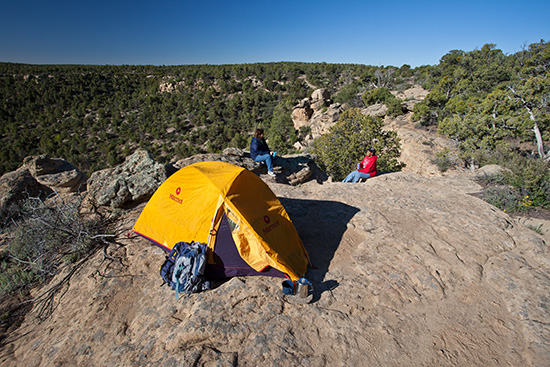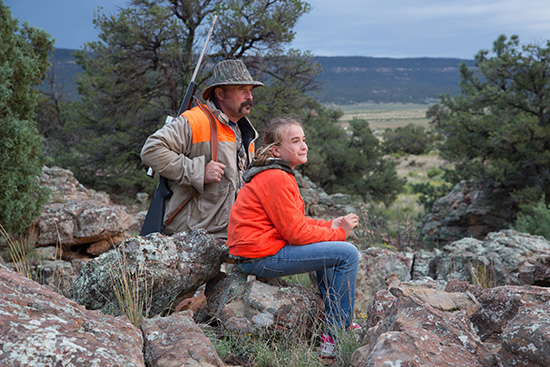
New Mexico Recreation Activities
BLM New Mexico’s outdoor recreation activities are as diverse as the landscape and cultures of the state. Almost all of this land is open for recreational use, such as hiking, cycling, hunting, fishing, camping (including dispersed camping), and much more.
Take a tour of the recreation activities available on public lands in New Mexico, and see what you would like to do!
The latest recreation closures listed on our closures and advisories page.
Recreation Areas
- Carlsbad Field Office
-
La Cueva Non-Motorized Trail System
- Farmington Field Office
- Las Cruces District Office
-
Organ Mountains-Desert Peaks National Monument
Kilbourne Hole Volcanic Crater
Prehistoric Trackways National Monument
Robledo Mountains OHV Trail System
Red Sands OHV Area - NOTICE: NM State Trust Lands
- Rio Puerco Field Office
-
Chain of Craters Backcountry Byway
- Roswell-Field-Office
-
Fort Stanton-Snowy River Cave NCA
Rio Bonito Acquired Lands
- Socorro Field Office
- Taos Field Office
-
Rio Chama Wild and Scenic River
Rio Grande del Norte National Monument
- Wild Rivers Backcountry Byway
- Orilla Verde Recreation Area
- Rio Grande Wild and Scenic River
Recreation Activities
- Camping
-

Tremendous camping opportunities can be found on public lands throughout New Mexico. These include developed campgrounds and primitive, dispersed camping opportunities, which can be found in a wide variety of backcountry environments -- from the wide open high plains and deserts of southern New Mexico to the alpine mountains of northern New Mexico.
Each campground offers a different mix of facilities, landscapes, and outdoor activities. Most campgrounds charge fees, ranging from $4.00 to $10.00 per unit per night. Monies from fees charged at developed campgrounds are used to maintain those areas for everyone’s enjoyment.
There is a generally a 14-day camping limit for BLM’s developed campgrounds. An exception to this is the developed campsites within BLM’s Rio Puerco and Taos Field Offices, which have a 7-day camping limit.
Dispersed Camping Sites
Camping on public lands away from developed recreation facilities is referred to as "dispersed camping" or "boondocking." These sites are widely dispersed, undeveloped, and are generally not signed as campsites.
BLM's overall policy is to allow dispersed camping on all the lands it administers with the following conditions and exceptions:
Dispersed camping is generally allowed on public lands in New Mexico for no more than a period of 14 days within any period of 28 consecutive days. The 14-day limit may be reached either through a number of separate visits or through 14 days of continuous overnight occupation during the 28-day period. After this time period, you must relocate to another site at least 25 miles away. The purpose of this is to prevent damage to sensitive resources caused by continual use of any particular areas.
Camping is prohibited within 900 feet of any developed water source such as a guzzler or watering trough so that the water is accessible to wildlife and livestock. Please do not park your vehicles near these waters or take any actions that would disturb wildlife or livestock from using these waters.
Campfires must be attended at all times. Campers must comply with all fire restrictions.
When using a motorized vehicle for camping access please park your vehicle near existing roads or existing undeveloped campsites.
Camping is permitted within all units of the National Wilderness Preservation System administered by the BLM in New Mexico. However, all motorized and mechanized vehicles and equipment are strictly prohibited in these areas. Campers must not dispose of refuse, hazardous materials, sewage, or gray water, in any manner that would pollute the surrounding area. Please pack it out, and dispose of those materials properly.
Individual BLM Field Offices may have additional or supplemental special camping rules or guidelines. Please call our Field Offices or visit our individual recreation websites for this information.
Dispersed camping must not:
- conflict with other authorized uses;
- occur in areas that are posted as being "closed to camping;" or
- in some way adversely affect wildlife species, livestock, or natural or cultural resources.
The BLM would like to remind you to be careful with fire at all times! Areas can be devastated by thoughtlessness or indifference on the part of anyone - hunter, camper, local resident, or visitor. New Mexico often suffers from drought, making the risk of fire very high, and it is up to all of us to protect our lands. Obey all fire use restrictions issued by the State of New Mexico or the BLM. You can find a list of BLM’s fire restrictions at: www.nmfireinfo.com.
- Mountain Biking
-

Most BLM trails in New Mexico are multiple use – they accommodate hikers, bikers, and horseback riders. The majority of public lands in New Mexico are open to hiking and backpacking. Certain BLM lands provide opportunities for these activities, especially where they are combined with scenic landscapes. Some locations have designated trails, while others require visitors to find their way through the landscape. Mountain biking opportunities are outstanding in terms of scenery and variety of riding experiences. Trails on BLM lands offer challenge and reward for the beginner and expert, alike. Unless posted, all roads are available for mountain biking. Equestrian activities on public lands occur on existing roads and trails, or in open country areas.
- Boating
-

BLM provides seasonal whitewater boating opportunities on the Rio Chama and the world-class Rio Grande in northern New Mexico, and on the Gila River Lower Box Canyon in southern New Mexico. These whitewater rivers attract a high number of both private and commercial rafters and boaters from all over the country. The only motor boating opportunities on public lands in New Mexico are located on the 121-surface-acre Santa Cruz Lake (Lake), north of Santa Fe. The Lake provides recreational opportunities for anglers, picnickers, campers, and boat lovers alike.
All boaters must comply with State of New Mexico and BLM regulations for boating safety, equipment, and registration. A U.S. Coast Guard-approved personal floating device (PFD) must be provided for each person in the boat. All children 12 years old and younger must wear the PFD at all times while on the Lake.
In addition, boaters must carry a first aid kit adequate to handle common river injuries; for non-self-bailing rafts, appropriate buckets must be on board each craft; a length of rope at least equal to the length of the boat; a throw line at least 50' in length must be on board each primary boat; patching and repair equipment, including an air pump; and a fire pan is required for all fires. Boaters must wear a Coast Guard-approved type III-V, properly-adjusted, lifejacket at all times when you are in or near the river.
- Off-Highway Vehicles
-

Numerous and diverse opportunities for off-highway vehicle (OHV) recreation exist on BLM-managed public lands in New Mexico. Miles of trails and open areas await all types of OHV enthusiasts. Please obey all signs regarding the management of public lands and routes. Know where you are driving, respect private property, stay well away from livestock, and wildlife and their water sources. The BLM regulates the use of roads, trails, and land under its jurisdiction in order to meet specific land management objectives, to protect resources, and to provide public safety.
Anyone operating an OHV on BLM land shall do so in accordance with State laws and regulations concerning use, standards, registration, operation, and inspection of off-road vehicles. Unless you are exempted by the New Mexico Department of Motor Vehicles, you must register your off-highway motor vehicle and affix the registration plate to your vehicle.
Anyone operating an OHV on public land must have a valid State license or learners permit unless: a) the individual is under the direct supervision of a person 18 years of age or older who has a valid operator’s license, and who is responsible for the acts of the person being supervised; or b) the person is certified by State government as competent to drive OHVs after successfully completing a State approved operator’s training program.
- Caving
-

There is much hidden beneath the surface of New Mexico's lands -- an exciting world of wonder, waiting for exploration. Caves are fascinating features of our landscape, and as much as one-third of New Mexico geology is cave and karst lands. Most of these areas are composed of soluble rocks, such as limestone or gypsum. Karst terrain can contain surface streams, sinking streams, sinkholes, springs, and caves. Groundwater recharge in these areas is extremely rapid, and karst aquifers may be quickly impacted by contaminants and pollutants entering our groundwater supplies. Some of our caves are not in karst lands but are in lava flows. These caves are known as lava tubes.
Cave and karst lands provide specialized habitats and environments. Animal species living in caves have special adaptations that help them survive in total darkness, a constant temperature, and humidity. Caves can contain sensitive and fragile resources, including geologic features, speleothems (cave formations), biological communities (from bats to specialized micro-organisms), paleontological resources, and cultural resources. Caves also provide opportunities for recreation, education, and scientific research. Many BLM caves are open for public recreation and for scientific research. Some caves require a free entry permit.
Many caves are used by bats. There are 27 bat species that live in New Mexico. Several of these species are extremely sensitive to the presence of humans. Besides bats and cavers, other creatures inhabit caves. Often neglected or overlooked, cave invertebrates are often more sensitive than many other cave adapted species. There are over 130 species of invertebrates found in BLM caves in New Mexico. Please watch out for them and leave them undisturbed.
- Hunting
-

Unless specifically prohibited, all Federal lands managed by the BLM and the U.S. Forest Service, in addition to some State lands, are open to hunting in New Mexico. There are three main types of hunting available in New Mexico -- upland game bird, small game, and big game (for example, deer, antelope, and elk). Varmint (non-game) hunting also is allowed. It is extremely important to hunt only on lands where it is legally allowed. Private land is open to hunting only if you have the permission of the land owner. If you do not have permission to hunt, you are trespassing and can be prosecuted.
It is your responsibility to know of any hunting restrictions and where they apply. The New Mexico Department of Game and Fish regulates hunting and fishing on all public lands. Extensive information related to hunting in New Mexico can be found at www.wildlife.state.nm.us.
Hunting and trapping near developed recreation sites and areas is not allowed. Remember, it is illegal to shoot within 150 yards of a dwelling or building without owner permission, from or across any graded or public road, or from any type of motor vehicle. On most public lands in New Mexico, you may not drive off existing roads and trails to hunt, even to retrieve downed game animals.
If you are hunting with the aid of a commercial outfitter or guide, you should ensure that they are permitted by the New Mexico Department of Game and Fish. You should also ensure that they are permitted by the BLM to conduct business on public lands.
Hunting licenses are required to hunt in New Mexico. In addition, the "Sikes Act" requires you to have a “Habitat Improvement Validation” stamp, as well as a hunting license, when hunting on BLM-managed lands in New Mexico.
